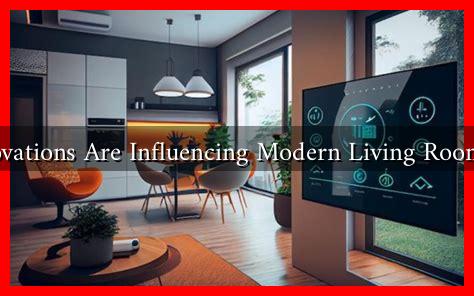-
Table of Contents
What Innovations Are Influencing Modern Living Room Layouts?
The living room has long been considered the heart of the home, a space for relaxation, entertainment, and socialization. As lifestyles evolve, so too do the layouts and designs of these essential spaces. Innovations in technology, design, and sustainability are reshaping how we think about living room layouts. This article explores the key innovations influencing modern living room designs, providing insights into how they enhance functionality and aesthetics.
Smart Home Technology: The New Standard
One of the most significant innovations impacting living room layouts is the integration of smart home technology. From voice-activated assistants to smart lighting and entertainment systems, technology is transforming how we interact with our living spaces.
- Voice-Controlled Devices: Devices like Amazon Echo and Google Home allow users to control lighting, temperature, and even entertainment systems with simple voice commands. This hands-free approach encourages open layouts, as furniture can be arranged without the need for visible control panels.
- Smart TVs and Streaming Services: The rise of smart TVs has changed the focal point of living rooms. With streaming services like Netflix and Hulu, the traditional media center is being replaced by sleek, wall-mounted screens, allowing for more flexible furniture arrangements.
- Automated Lighting: Smart lighting systems can be programmed to adjust based on the time of day or activity, creating a dynamic atmosphere that complements various layouts.
Open Concept Living: Breaking Down Barriers
The open concept design has gained immense popularity in recent years, promoting a seamless flow between the living room, dining area, and kitchen. This layout encourages social interaction and maximizes space, making it ideal for modern families.
- Enhanced Social Interaction: Open layouts facilitate conversation and connection, allowing family members and guests to engage with one another regardless of their location in the space.
- Natural Light: Removing walls increases the amount of natural light that enters the home, creating a brighter and more inviting atmosphere.
- Flexible Furniture Arrangements: With fewer walls, homeowners can experiment with different furniture arrangements, adapting the space to suit various activities, from movie nights to family gatherings.
Sustainable Design: Eco-Friendly Innovations
As environmental awareness grows, sustainable design practices are becoming increasingly important in modern living room layouts. Homeowners are seeking materials and designs that minimize their ecological footprint.
- Recycled Materials: Furniture made from reclaimed wood or recycled metals is not only stylish but also reduces waste and promotes sustainability.
- Energy-Efficient Appliances: Incorporating energy-efficient lighting and appliances can significantly reduce energy consumption, making living rooms more eco-friendly.
- Indoor Plants: Biophilic design, which incorporates natural elements into interiors, is gaining traction. Indoor plants improve air quality and add a touch of nature to living spaces.
Multi-Functional Furniture: Maximizing Space
With urban living spaces becoming smaller, multi-functional furniture is a game-changer for modern living room layouts. These innovative pieces serve multiple purposes, making them ideal for maximizing limited space.
- Sofa Beds: Perfect for accommodating guests, sofa beds provide a comfortable seating area that can easily transform into a sleeping space.
- Storage Ottomans: These versatile pieces can serve as footrests, extra seating, or storage solutions, helping to keep living rooms organized and clutter-free.
- Expandable Coffee Tables: Coffee tables that can be raised or expanded offer flexibility for dining or working, adapting to the needs of the moment.
Conclusion: The Future of Living Room Layouts
Modern living room layouts are being transformed by a combination of smart technology, open concepts, sustainable practices, and multi-functional furniture. These innovations not only enhance the functionality of living spaces but also reflect the evolving lifestyles of homeowners. As we move forward, it is clear that the living room will continue to adapt, becoming a more integrated, flexible, and eco-friendly space. Embracing these trends can lead to a more enjoyable and efficient living environment, making the heart of the home even more inviting.
For further insights into modern home design trends, consider exploring resources like Architectural Digest or Houzz.

